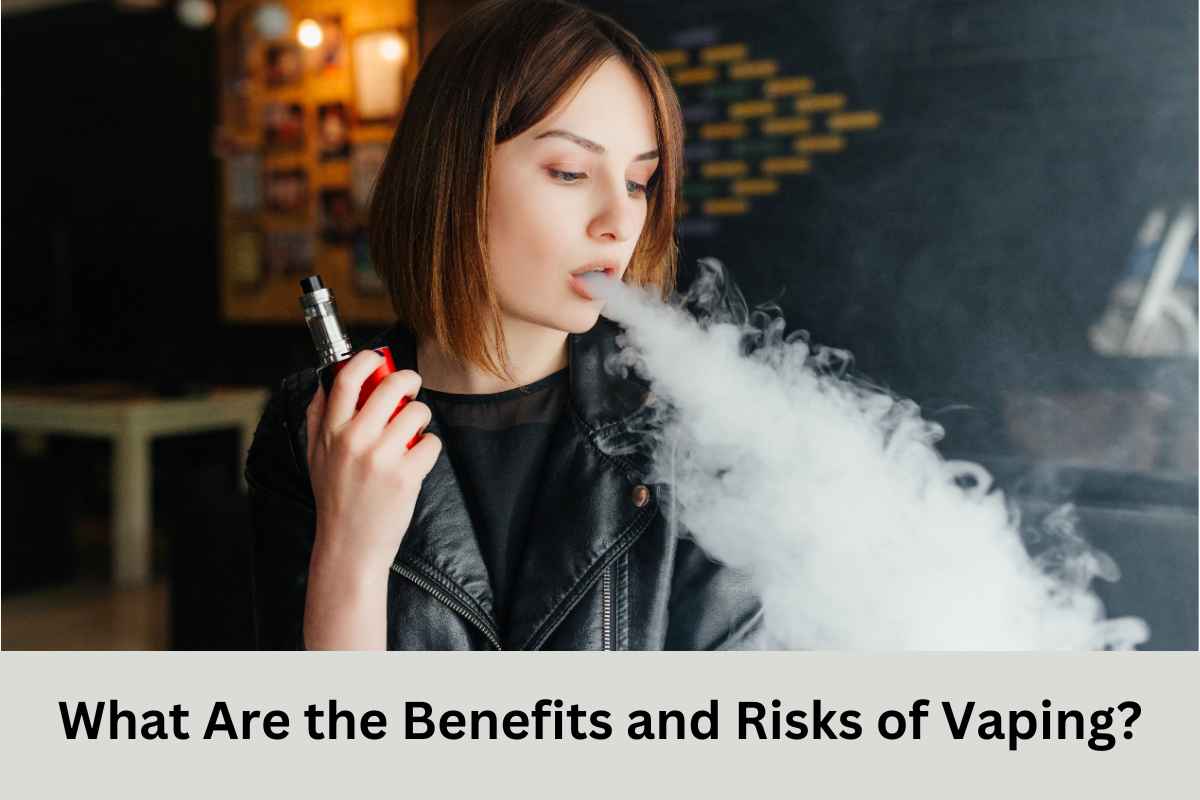By: Design for Change
Categories:
What Are the Benefits and Risks of Vaping?
You are here: Many people claim that e-cigarettes helped them quit smoking regular cigarettes. This is a significant benefit due to the health risks associated with cigarettes. Studies show that vapes were more effective in helping adults stop smoking than placebos or other non-nicotine products. However, some people end up alternating between smoking cigarettes and using e-cigarettes, which doesn’t solve their problem. They may not be aware that the risks of vaping often outweigh the benefits.
Many people claim that e-cigarettes helped them quit smoking regular cigarettes. This is a significant benefit due to the health risks associated with cigarettes. Studies show that vapes were more effective in helping adults stop smoking than placebos or other non-nicotine products. However, some people end up alternating between smoking cigarettes and using e-cigarettes, which doesn’t solve their problem. They may not be aware that the risks of vaping often outweigh the benefits.
One myth about e-cigarettes is that the vapor is as harmless as water vapor. In truth, nicotine is not the only concern when it comes to vaping. The vapor contains other dangerous chemicals that affect the mouth, upper airway, throat, esophagus, stomach, and lungs.
Are Vapes Less Harmful Than Cigarettes?
Vapes can be less harmful than regular cigarettes because it takes more puffs to ingest the same amount of nicotine. For instance, it takes 10 to 15 puffs to finish a cigarette. However, vaping requires 30 to 50 puffs to get a similar amount of nicotine.
To understand how vaping works, you must know how nicotine absorption differs between cigarettes and e-cigarettes. Here are a few examples:
- The vapor from e-cigarettes penetrates deeper into the lungs before being absorbed into the bloodstream. In contrast, smoke particles from regular cigarettes are heavier and are quickly absorbed in the upper respiratory tract.
- E-liquids contain propylene glycol which boosts absorption rates of nicotine compared to other nicotine products.
- Some vapes release more vapor for a bigger nicotine hit. For instance, sub-ohm tanks in mod setups release more vapor than compact pod-based systems or mod setups.
- The depth and length of puffs affect how quickly nicotine is delivered and processed by the body.
Vaping may be less harmful than smoking cigarettes because vape aerosol generally contains fewer toxins than cigarettes. But, this doesn’t mean they are safe. Vape liquids contain harmful substances such as volatile organic compounds, cancer-causing agents, and heavy metals. Recent studies show that e-cigarettes can be as harmful to a person’s heart as traditional cigarettes.
What Are the Real Risks of Vaping?
The CDC reports that approximately 8.1 million people in the U.S. use e-cigarettes that contain nicotine. Furthermore, about 2,800 people were hospitalized due to lung injury associated with e-cigarette use, and 68 of those cases resulted in death.
A JAMA study reveals a link between vaping, nicotine, and mental health as e-cigarette users are at high risk of depression and ADHD symptoms compared to non-nicotine users.
The risks of vaping include physical and psychological dependence. For instance, inhaling nicotine causes the brain to release dopamine which controls feelings of pleasure, motivation, and learning. Eventually, the brain produces cravings because it wants more of the feeling elicited from the dopamine release. As a result, nicotine addiction develops.
Signs of nicotine addiction include:
- Withdrawal symptoms when nicotine is withheld
- Inability to stop using products that contain nicotine
- Using nicotine despite the consequences
- Needing nicotine to feel satisfied
- Urges and cravings to use nicotine
Regardless of the delivery system, ingesting nicotine will lead to health problems that may be irreversible. With more than two million middle and high schoolers using vapes daily, it’s hard not to use the term “epidemic.” Sadly, teens are more vulnerable to the side effects of nicotine because their young brains and bodies are still developing. Nicotine will affect their mental health in many ways including their ability to concentrate, control impulses, and retain information. The effects on their physical health can include lung damage, throat and mouth cancer, cardiovascular disease, and more.
Are Zero-Nicotine Vapes Safer?
Although nicotine-free vaping seems safer than products that contain nicotine, vaping can still pose health risks. E-liquids are a type of juice used by e-cigarettes to produce vapor to be inhaled. Even without the presence of nicotine, the liquid contains various chemicals that cause health problems.
Typically, the e-liquids contain ingredients such as vegetable glycerine, propylene glycol, and water. E-cigarette manufacturers also add various additives to create different flavors. Many of the products are recognized as safe by the FDA. However, little research has been done regarding the effects of heating and vaporizing the ingredients.
Vaping without nicotine will prevent nicotine dependence or addiction and the associated side effects. While this is true, zero nicotine can cause other side effects such as:
- Heating propylene glycol and glycerol releases formaldehyde, a known carcinogen.
- Tingling, burning sensations when the vapor is inhaled
- Inflammation in the lungs that can lead to lung caring
Overall, the risks of cigarette smoking are much greater than the risks of zero-nicotine vaping. However, research shows that vaping even without nicotine is not completely safe.
Concerned About the Risks of Vaping? Design for Change Can Help You Quit
Inhaling heated chemicals into your lungs is risky no matter which method you use. The chemicals typically result in dependence or addiction that requires professional treatment to overcome. If you are concerned about the risks of vaping but are struggling to quit, we can help.
Design for Change Recovery provides a full continuum of care utilizing evidence-based therapies for any kind of addiction. We will work with you to create a personalized treatment program based on your unique needs.
Contact our Lancaster, CA facility today to begin a healthier, more productive, nicotine-free lifestyle.
Sources:
cdc.gov – About Electronic Cigarettes
https://jamanetwork.com/ -E-Cigarette Use Among US Adults
ncbi.nlm.nih.gov/ – Vitamin E Acetate as a Plausible Cause of Acute Vaping-Related Illness


